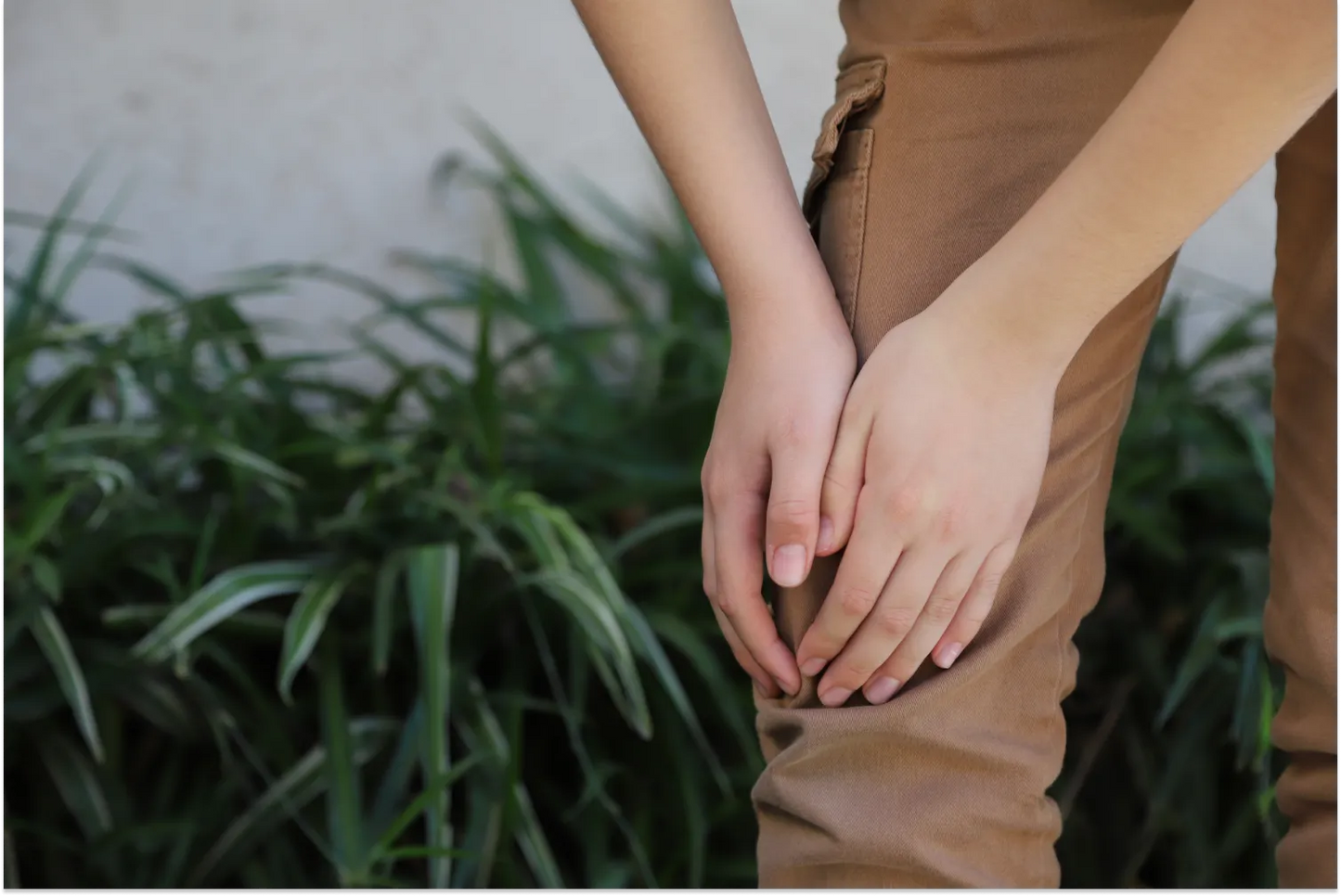
11 Best Yoga Poses To Reduce Bloating
Do you ever feel that uncomfortable, puffy sensation after a meal, making your jeans feel like they've shrunk overnight? We've all been there!
While it's a common issue, a bloated stomach can leave us yearning for some natural relief. Enter yoga — a holistic method that has been embraced for centuries not only for flexibility and mental clarity but also for its gentle ability to encourage better digestive health.
What's the Connection Between Yoga and Digestive Health?
Yoga isn't merely a physical practice; it's a symphony of postures, breathing, and mindfulness, all working in harmony. Certain poses can stimulate the digestive tract, gently massaging internal organs and encouraging the movement of trapped gas.
Additionally, the relaxation and stress-reducing benefits of yoga can have a positive impact on the nervous system and foster a more balanced gut environment. When we're relaxed, our body is better equipped to process food and absorb essential nutrients — setting the stage for optimal digestive health.
How Can Yoga Poses Encourage Gut Health?
Each yoga pose brings with it a unique set of benefits, and several are crafted specifically to target the abdominal and digestive regions.
When executed with precision, these poses can:
- Increase blood flow: A heightened circulation to our digestive organs, thanks to various yoga poses, can lead to an enhanced digestion process, ensuring that nutrients are absorbed more efficiently.
- Ease muscle tension: Often, tightness in the abdominal muscles can contribute to discomfort and bloating. Stretching and releasing this tension can create a soothing effect on the entire region.
- Promote peristalsis: Some yoga poses have the power to stimulate the rhythmic contraction and relaxation of the intestines, ensuring smooth and timely movement of food through our digestive system.
- Stress reduction: A significant disruptor of digestive harmony is chronic stress. Embracing yoga poses that emphasize deep, rhythmic breathing and relaxation not only calms the mind but can restore gut equilibrium.
The 11 Best Yoga Poses To Reduce Bloating
Have you ever felt that gentle swell in your belly that seems to sneak in after a hearty meal? We've all been there. Fortunately, nature has blessed us with yoga — a holistic tool that not only aligns our mind and spirit but also encourages better digestive health. Let's dive deep into some yoga poses that can provide that much-needed relief and maintain a happy gut.
1. Wind-Relieving Pose (Apanasana)
A classic pose in yoga, apanasana is renowned for its ability to release trapped gas in the digestive system.
Step-by-step guide:
- Lie flat on your back on a comfortable mat.
- Exhale and bring your knees towards your chest, hugging them.
- Hold the position for a few breaths, feeling the stretch.
- Release and return to the starting position.
- Repeat for a couple of minutes.
2. Child's Pose (Balasana)
A restorative and calming pose, balasana is not only beneficial for relaxation of the digestive system but it can also offer relief from back pain.
Step-by-step guide:
- Start on your hands and knees in a tabletop position.
- Sit back, lowering your hips toward your heels.
- Stretch your arms forward on the mat, forehead resting on the ground.
- Stay in this position, taking deep breaths for as long as it feels comfortable.
- To exit, slowly come back to the tabletop position.
3. Spinal Twist Pose
This pose massages the abdominal organs and encourages the movement of trapped gas in the digestive system.
Step-by-step guide:
- Lie flat on your back.
- Extend your arms out to the sides in a “T” shape.
- Bend your knees and keep your feet flat on the floor.
- Slowly drop your knees to the left side, keeping your shoulders flat on the mat.
- Turn your head to the left and hold for a few breaths.
- Bring your knees back to the center and repeat on the opposite side.
4. Bridge Pose
A pose that stretches the abdominal muscles, bridge pose also stimulates the digestive organs, supporting their functionality.
Step-by-step guide:
- Lie on your back with your arms resting beside you, palms down.
- Bend your knees and keep your feet flat on the floor, hip-width apart.
- Inhale and lift your hips and upper body towards the ceiling, pressing into your hands and feet.
- Clasp your hands below your pelvis, extending through your arms.
- Hold the pose for several breaths.
- Exhale and gently lower your hips back to the floor.
5. Forward Fold (Uttanasana)
Uttanasana provides a deep stretch to the entire back and stimulates the digestive organs in the abdomen.
Step-by-step guide:
- Stand tall with your feet hip-width apart and arms by your sides.
- Inhale and raise your arms overhead.
- Exhale, bend forward from your hips, keeping your back straight.
- Allow your hands to touch the floor or rest on your shins, depending on your flexibility.
- Let your head hang heavy and hold for a few breaths.
- Inhale and slowly rise back to the standing position.
6. Happy Baby Pose
The happy baby pose, often seen in playful infants, allows for a gentle stretch of the lower back and hips. This delightful pose also offers a gentle massage to the abdominal organs, encouraging a smoother digestive flow.
Step-by-step guide:
- Begin by lying flat on your back.
- Inhale, bringing your knees towards your chest.
- Grab the outer edges of your feet with your hands. If you can't reach your feet, hold onto your shins or ankles.
- Gently pull your knees down towards the floor beside your torso.
- Keep your back flat on the ground and take deep breaths.
- Rock side to side for added relaxation, if desired.
- Release after several breaths and return to the starting position.
7. Cow Pose
This pose, often paired with cat pose, provides a gentle flexion and extension of the spine. By doing so, it supports the stimulation of the digestive organs, enhancing their function.
Step-by-step guide:
- Start in a tabletop position with your wrists aligned under your shoulders and knees under your hips.
- Inhale, arching your back, lifting your tailbone, and looking upwards.
- Ensure your neck is long and relaxed, and your shoulders are away from your ears.
- Hold for a few breaths, feeling the gentle stretch.
- Exhale, returning to the neutral tabletop position.
8. Knees-to-Chest Pose
This pose, similar to wind-relieving pose, offers a compressive sensation to the abdomen, aiding in the release of trapped gas.
Step-by-step guide:
- Lie flat on your back.
- Exhale, drawing both knees to your chest.
- Wrap your arms around your knees, giving yourself a gentle squeeze.
- Take deep breaths, feeling the compression in your abdomen.
- Release and straighten your legs after several breaths.
9. Twist Pose (Paschimottanasana)
Not to be confused with the seated forward bend, this deep twist supports the digestive process by massaging the abdominal organs.
Step-by-step guide:
- Sit upright with your legs extended in front of you.
- Bend your right knee and place the right foot outside of your left knee.
- Place your right hand (or right arm if you need more balance) behind you for support.
- Inhale, lifting your left arm up. With your left hand, try to reach beyond your right knee for a deeper twist.
- Exhale, twisting to your right, hooking your left elbow outside of your right knee.
- Look over your right shoulder, keeping the spine tall.
- Hold for several breaths, then release and switch sides.
10. Inversion Poses
Inversions, like the gentle legs-up-the-wall pose, use gravity to aid the flow of the digestive system and maintain circulatory health.
Step-by-step guide:
- Sit beside a wall with your knees bent.
- Lie on your back, extending your right leg and left leg up the wall.
- Your hips can be close to the wall or a few inches away, based on comfort.
- Rest your arms on the ground beside you, palms facing up.
- Breathe deeply and relax in this pose for a few minutes.
11. Forward Bend
Similar to uttanasana, this seated version provides a stretch to the back while stimulating the abdominal organs.
Step-by-step guide:
- Sit with your legs extended in front of you.
- Inhale, lengthening your spine.
- Exhale, hinging at the hips, and fold forward over your legs.
- Reach for your feet, ankles, or shins, depending on your flexibility.
- Keep your back straight and hold the pose, taking deep breaths.
- Inhale, rising back to a seated position.
How Can You Incorporate These Poses Into Your Daily Wellness Routine?
Starting your day with a purposeful yoga sequence can do wonders in rejuvenating both your mind and body, consequently setting a favorable ambiance for your digestive health. Think about these sequences as an investment in your well-being; even dedicating a mere 10 minutes each morning can be a game-changer.
Consider consulting with a yoga teacher to design a routine that combines a mix of poses to alleviate digestive issues such as indigestion, constipation, and gas pains.
An example routine might have you begin with the calming child's pose to center yourself. Progress to wind-relieving pose, which can be especially beneficial after waking up, and then transition to the balancing seated twist to invigorate your digestive system.
But remember, as with any wellness regimen, the magic lies in consistency. Establishing a rhythm of daily short yoga sequences can yield far more benefits than an intensive but irregular yoga practice.
How Else Can You Support Digestive Health?
Yoga, undeniably, is a solid pillar of digestive health — but it's just one aspect of a holistic approach to wellness. The foods we consume play a pivotal role in dictating the health of our gut.
Here at Dr. Kellyann, we strongly emphasize the unparalleled benefits of bone broth — a nourishing concoction revered through the ages. Rich in collagen and packed with essential minerals, bone broth is like a shot of wellness for the gut. Its properties can support the gut lining, ensuring it remains robust against challenges like bloating.
In conjunction with bone broth, adopting a diet that emphasizes whole foods, brimming with dietary fiber, and integrates fermented products can sculpt an internal environment where your digestive system thrives and flourishes.
The Bottom Line
While bloating is a common, often temporary discomfort, it's a sign of our bodies asking for a bit more attention. Incorporating yoga into your wellness regimen can not only provide relief but also emphasize the body's intrinsic connection between movement, breath, and gut health.
In a world where quick fixes are tempting, taking a holistic, consistent approach to digestive wellness stands out. After all, our gut is our second brain, and doesn't it deserve the utmost care?
Ready to enhance your journey to optimal digestive health? Why not complement your yoga routine with nature’s bounty? Dive deep into the world of holistic nutrition, and know that Dr. Kellyann is here to support you every step of the way.
Sources:
Yoga: What You Need To Know | NCCIH
Yoga For Digestion: How it Works | Live Science
Your Digestive System: 5 Ways to Support Gut Health | Johns Hopkins Medicine
Peristalsis: Definition, Function & Problems | Cleveland Clinic
The Yoga-Heart Connection | Johns Hopkins Medicine
5 Yoga Poses You Can Do Right Now To Strengthen Your Core | Cleveland Clinic







